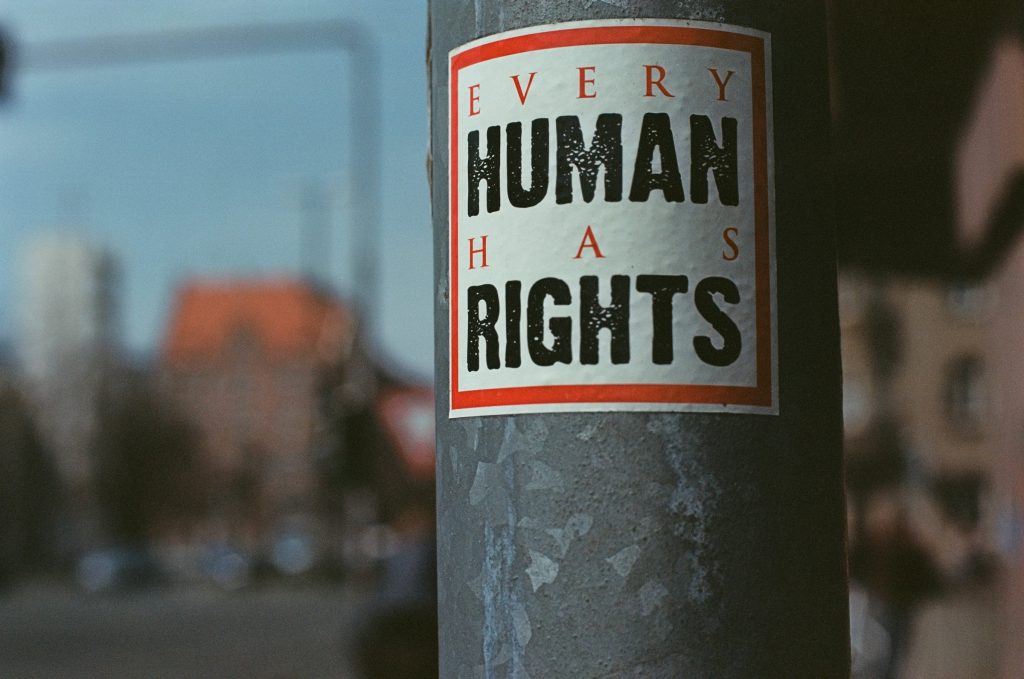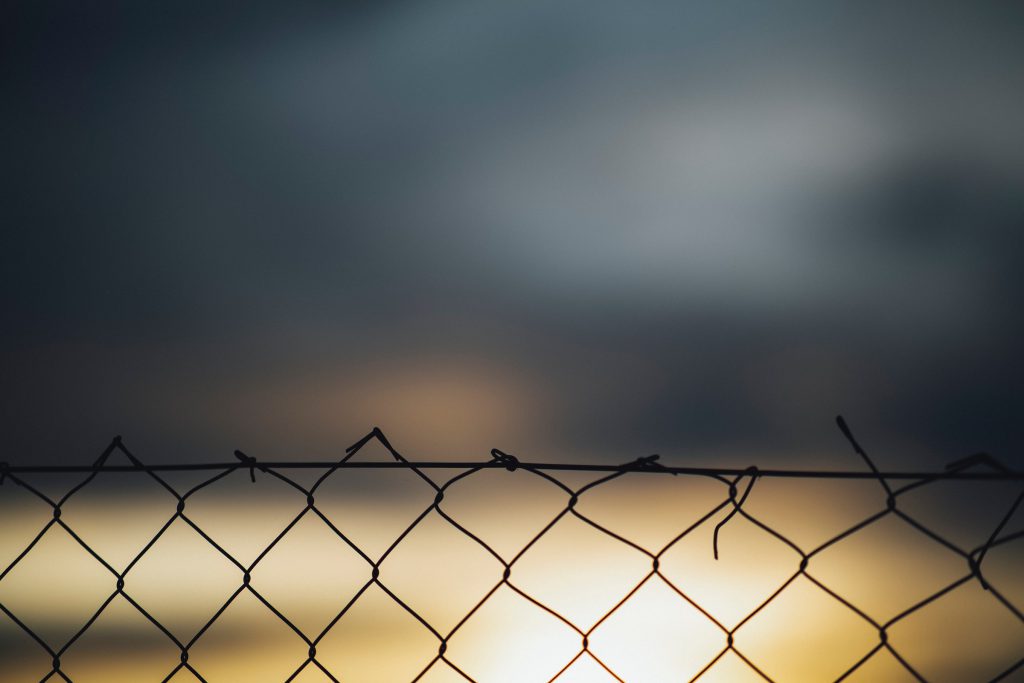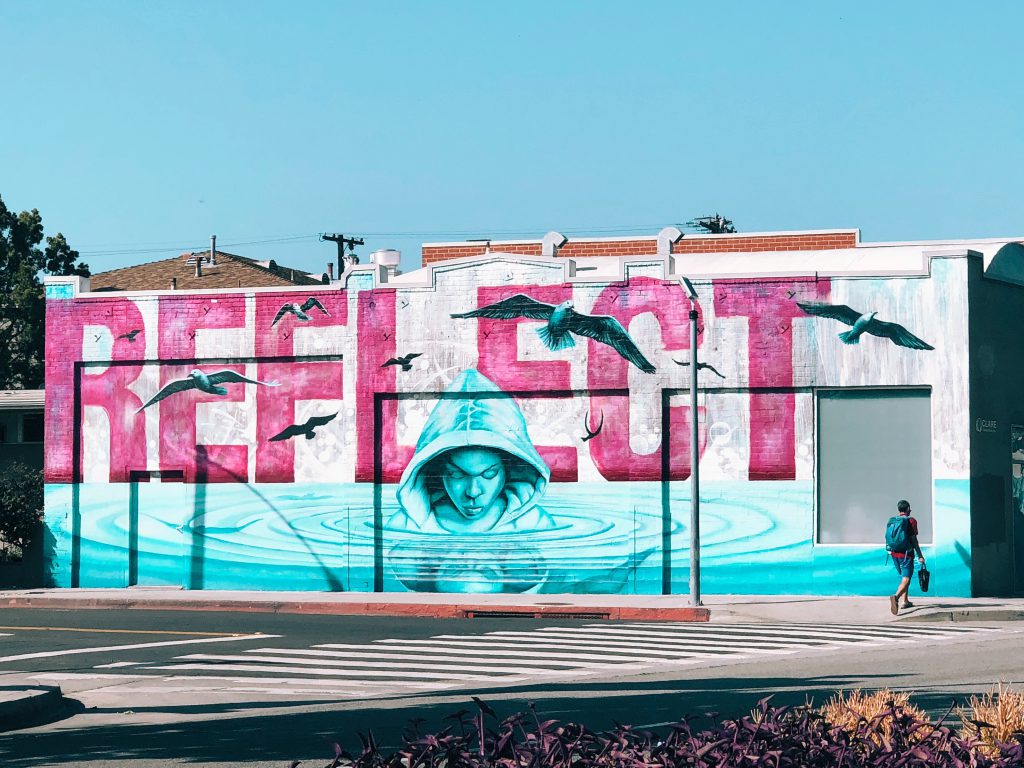In my previous two posts, I tried to provide a comprehensive exploration of the multifaceted challenges posed by gender-based violence (GBV) and, to some extent, delve into the role of communication in addressing this global issue. My first post, SDG5: Between Collective and Individual Action centres around the Sustainable Development Goals (SDGs) Summit, questioning the adequacy of the call to action and emphasizing individual accountability. The second post, Multi-modal Communication about SGBV focuses on multi-modal communication strategies, specifically highlighting the power of visual communication, using the example of the “Wall of Dolls” art installation to raise awareness about femicide.
In this final post, I will provide an edited overview of key elements raised in the previous posts, while aiming to draw connections to academic and professional debates around GBV and as well communications studies, and conclude with my reflections about the topic and the blogging experience.
Individualor Collective Action? Or Both?
The first post critically assesses the SDGs Summit’s role in eliminating violence against women and girls (VAWG). It highlights the prevalence of GBV globally and argues for the insufficiency of the current collective efforts. Data showing that 1 in 3 women worldwide experiences physical or sexual violence underscores the urgency of the issue (WHO, 2021). Despite numerous commitments, including the global commitment reflected in Sustainable Development Goal 5, progress has been slow and the existing legal frameworks are inadequate. Even though scholars such as Merry (2006) noted the importance of situating legal frameworks in combating gender-based violence within local contexts, meaning and power dynamics – translating international and regional commitments to national and local levels, continues to pose a disconnect and a challenge.

Source: Unsplash
Every human has rights. Still, many women continue to experience human rights violations and experience violence every day, due to numerous failures, including legislative ones. For instance, the African Union (AU) Protocol to the African Charter on Human and People’s Rights on the Rights of Women in Africa is a regional treaty that entered into force in 2005, through which AU Member States (MS) committed to ensure the protection of women from all forms of violence. This includes, taking appropriate and effective measures “to enact and enforce laws that prohibit all forms of violence against women including unwanted or forced sex whether the violence takes place in private or public” (African Union, 2003). Despite this commitment made by the AU MS, including to Agenda 2063 and Agenda 2030, a closer assessment of government policy, particularly on the existence of domestic violence legislation, shows that despite the existence of various legal frameworks, commitments, and obligations, there are still 26 out of 55 African countries that do not have domestic violence legislation at all (UN Women, 2019). Moreover, in 33 out of 55 African states, there is no explicit criminalization of marital rape in the existing domestic violence legislation (UN Women, 2019). This is just one of the many examples illustrating how legislative failures, including a disconnect between regional – national and local contexts continue pose challenges for eliminating GBV. Moreover, the challenge extends beyond the absence of laws, to also involve the effective enforcement of existing legislation. This is strongly aligned with Bell and O’Rourke (2007) highlighting that achieving meaningful change requires not only the creation of robust legal instruments but also a commitment to their consistent application and enforcement.
Interrogating Ourselves and the Context Surrounding Us
Further, drawing on the academic literature, such as Heise’s (1998) work on the conceptualization of violence against women, in my first post, I position GBV as a violation of human rights embedded in cultural and social norms. This is particularly important considering Heise’s framework that “conceptualizes violence as a multifaceted phenomenon grounded in an interplay among personal, situational, and sociocultural factors” (Heise, 1998). Not only that violence is understood from a holistic perspective, but its very context-specific approach facilitates an intersectional view as well, while considering at the same time, structural and systemic inequalities. It further allows us to understand and explore the interconnectedness of various forms of oppression, in line with Crenshaw’s intersectional feminist perspectives (Crenshaw, 1989). Moreover, cultural and social norms have profound influence on shaping individual behaviour and could possibly reduce and prevent violence, or otherwise, potentially condone or perpetuate it (WHO, 2009). Thus, interrogating our beliefs, attitudes and behaviours is an important step in addressing GBV. In line with this, the first post calls for individual and collective introspection, urging individuals to interrogate their roles and contribute to breaking the cycle of fear and silence.
Transcending ON and OFF…line Boundaries

Source: Unsplash
Quoting the UN Women, the first post brings attention to the dual role of Information Communication Technology (ICT) tools in both facilitating access to information about GBV and perpetuating online violence. This mirrors academic debates on the potential of technology to both empower and harm women (Gajjala, 2014; Sweetman, 2018). While ICT can be used to “ensure safety and security”, it also can play a role in facilitating to some extent “offline violence including stalking, harassment, and invasion of privacy”; at the same time, it can foster the creation of a “new forms of violence […] that are unique to the online environment, for example “revenge porn” (Sweetman, 2018:223).
At the same time, there are numerous examples where ICT can be, and has been used to mobilise public support and contributed “almost instantaneously” to the creation of “movements to challenge injustices and change the world, using pre-existing networks of friends and contacts” (Sweetman, 2018). One example is the case of surrounding the use of the hashtag #Cuentalo, surrounding the “La Manada (Wolfpack)” case in Spain, in 2016, giving rise to the #Cuéntalo (TellYourStory). Its impact has been widely recognized both in the online and offline spheres. The hashtag #Cuéntalo recounted experiences of sexual violence, told by SGBV survivors or family and friends of those who were killed, bringing together “over 160 Tweets from over 60 countries around the globe”[1]. At the same time, the case and the hashtag brought thousands of protestors together in Spain, with social media posts describing the protests as “Spain’s largest spontaneous feminist uprising in living memory”. Jones and Doe (2020) highlight that platforms like Twitter, Facebook, and Instagram enable survivors to share their stories, fostering solidarity and breaking the silence surrounding GBV. The #Cuéntalo is an illustrative example showing the interconnectedness between the online and offline, how different discourse transcend boundaries, moving from individual to collective action and from online to the offline sphere. It also showcases the role of social media in amplifying voices, raising awareness and mobilizing communities and public support (Sweetman, 2018).
Multi-modal Communication around SGBV
In the second post, I shifted the focus to communication strategies in combating SGBV, emphasizing the need for multi-modal approaches. The post questions the effectiveness of various communication channels and explores auditory, written, and visual forms of communication. By using the example of the “Wall of Dolls” to illustrate the potential of visual communication, I tried to introduce the concept of artivism, as a form of visual communication that used artistic expression, combining targeted and social justice messaging.
To demonstrate the power of auditory communication in conveying messages of solidarity, I referred to the UN Women’s “One Woman” song. Although the song messaging is about solidarity and empowerment, one critique that could be further explored is around the choice of language. Despite the fact that the song brought together 25 artists together from 20 countries, it is sung in English. One critique around the language choice could be in terms of better exploring the potential pitfalls of/around cultural insensitivity in global campaigns, echoing debates in global communication studies (Appadurai, 1996). With English being spoken worldwide by an estimated 1.5 billion people (Statista, 2023), this choice could facilitate engagement, reaching a wider audience with a specific purpose (e.g.: raising awareness, raising funds). However, it also opens discussions about representation, power dynamics and content creation. One can thus interrogate who has the power to create, who is represented, how and by whom, and with what purpose.

Source: AC/Personal archive, “Wall of Dolls”, Via Edmundo de Amicis, Milano (ITALY, September 2023)
Moreover, in the second post, the discussion centers around visual communication, particularly looking at artivism, as the intersection of art and activism (Rentschler, 2019). The analysis of the “Wall of Dolls” highlights its power in creating awareness, fostering solidarity, and challenging norms. Briefly, ethical considerations questioning ethics around the right to portray photos of femicide victims is raised. With debates showing two extremes: on the one hand, the photos are perceived as an opportunity to raise awareness and foster collective action, and one the other hand, critiques challenge such representation and portrayal as it is interlinked with issues around dignity and consent, further research is needed. I am thus interested, in further exploring where should we draw the line, and whether we have a duty, or obligation to preserve dignity.
Furthermore, as an artistic expression, the ”Wall of Dolls” is a form of artivism that allows both tourists and local residents to stop, witness and reflect upon SGBV, while at the same time, commemorating and preserving the memory of those killed by horrific acts of violence. For instance, research aimed at unpacking the metaphoric use of colours and their interpretation indicates that red is often linked to describing “people’s emotional states related to anger” (Meier, 2015), and associated feelings, which in this case, could symbolize the strong emotions surrounding the “Wall of Dolls”. In line with Halbwachs’ social framework, the “Wall of Dolls” could be considered a powerful example of how art is not created in isolation, but rather embedded in the collective memory of society – with numerous stories being told through each doll, photo, or message conveyed.
Concluding Thoughts

Source: Unsplash
Both posts converge on the importance of collective and individual action in addressing GBV. The first post emphasizes the need for individuals to reflect and act, while the second post illustrates the power of various communication modes in mobilizing collective awareness. Among the two, the interconnectedness between online and offline action and narratives is drawn, showing for instance, how online communication using social media can foster or facilitate offline action such as instances where public support is mobilised (e.g.: protests following the “La Manada” case).
Understanding and addressing GBV is a personal area of interest, and the timing around this blog and team work exercise, surrounding the SDGs Summit has provided me with a great opportunity to delve deeper into SDG 5. Given this crucial timing that also marked the mid-way to Agenda 2023, for me, the SDGs Summit was positioned, as a crucial moment for assessment and reflection, in terms of both collective and individual action. Further, as I unpacked the issue of GBV as part of SDG5, I tried to integrate personal reflections, global statistics, and real-world examples to engage readers in the discourse. Having the opportunity to witness the “Wall of Dolls”, stand in front of it and observe how people engaged with it, and later on reflect and write about it – has been holistic experience as it allowed me to self-assess my behaviour. To my surprise, very few pedestrians did actually stop to read the description of the wall, and take time to look at the photos, the dolls, or other materials represented. Most of them, took a photo and continued to walk. Thus, reflecting on individual actions, and my own – it made me further question how are we really navigating issues pertaining to GBV and what are we, as individuals and collectives doing.
On a final note, the research and the literature consulted for this exercise gave me new insights surrounding the intersections of gender-based violence, sustainable development, and communication strategies. I hope that, through my posts, I could provide you with those insights and raise your interest in learning more, and finding ways to address GBV.
Bibliography
- African Union (2003): Protocol to the African Charter on Human and People’s Rights on the Rights of Women in Africa.
- Amy O’Donnell & Caroline Sweetman (2018) Introduction: Gender, development and ICTs, Gender & Development, 26:2, 217-229.
- Appadurai, A. (1996). Modernity at Large: Cultural Dimensions of Globalization. University of Minnesota Press.
- Bell, C., & O’Rourke, C. (2007). In Her Lifetime: Female Morbidity and Mortality in Sub-Saharan Africa. New York: World Bank.
- Crenshaw, K. (1989). Demarginalizing the Intersection of Race and Sex: A Black Feminist Critique of Antidiscrimination Doctrine, Feminist Theory and Antiracist Politics. University of Chicago Legal Forum, 1989(1), 139-167.
- Devastatingly pervasive: 1 in 3 women globally experience violence.
- Gajjala, R. (2014). Global feminist ethics in social media: A critical review. Feminist Media Studies, 14(6), 1103-1118.
- Halbwachs, M. (1992). On Collective Memory
- Heise, L. (1998). Violence against women: An integrated, ecological framework. Violence against Women, 4(3), 262-290.
- Meier, B. (2015): Do metaphors color our perception of social life? In A. Elliot, M. Fairchild, & A. Franklin (Eds.), Handbook of Color Psychology (Cambridge Handbooks in Psychology, pp. 419-432)
- Merry, S. E. (2006). Human rights and gender violence: Translating international law into local justice. Chicago: University of Chicago Press.
- Proyecto #Cuéntalo: Available at: http://proyectocuentalo.org/
- Statista (2023), The most spoken languages worldwide.
- UN Women (2019): UN Women Progress of the World’s Women Report 2019-2020: Families in a Changing World
- WHO (2012): Joint news release
